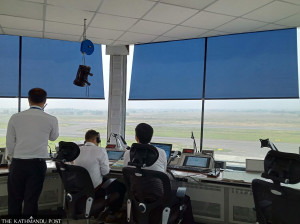Columns
India and Nepal have finally agreed on something: the decision to charge an import tax on imported books
Let’s not fool ourselves by suggesting an import duty on books will improve our domestic publishing industries.
Amish Raj Mulmi
There are few spaces where the policies of India and Nepal align. With the Indian budget last week, however, there is one. India has decided to impose a 5 percent customs duty on all imported books; a little while ago, Nepal began to charge a 10 percent duty on all book imports. While there had been a 10 percent customs duty on books in India earlier, the duty had been exempted, so it’s not fully clear yet whether the new 5 percent is on top of the exemption, or whether it’s a standalone tariff.
Publishers in both countries have raised their objections to the move, the defence being that a tax on books will increase the prices. At the same time, both governments have defended the tax by saying it will encourage the domestic publishing industry. While Ajit Baral, publisher at FinePrint, raised the issue of a paltry customs revenue of Rs120 million on total imports of Rs1.2 billion, publishers in India have said, ‘I don't think levying 5 per cent customs duty on imported books is going to benefit our local publishers. If one really wants to help publishers here, the rising costs of paper should be brought down. The scarcity of paper should be addressed and removed.’
Let’s back up a bit and find out why it is essential to import books first (this column focuses on the ‘trade’ books market—i.e. the non-textbook market).
A book is not a commodity like other products. It is one of the few ‘consumer products’ (since our policymakers like economic jargon) whose intellectual copyright rests with one individual(s), but whose production and distribution responsibilities rest with another, i.e., the publisher. It is one of the few human inventions whose basic idea has not altered despite several disruptions (even an ebook is, at the end of the day, a book). A flourishing book market is also an indication that the society’s income levels are high; books are expensive, to begin with, and disposable incomes must be high for a society to begin spending on them.
To print and sell a particular text, a publisher has to consider several factors: author’s advance and royalties; editorial and marketing costs; the costs of inputs such as paper; and finally, distribution and warehouse costs. As with most things made on the production line, the costs depend on how many books a publisher can sell. And yet, there can be a disconnect. A bestseller may sell 30,000 copies and not make any money for the publisher (high advance, high marketing costs, etc.); corollary, a book may sell 5,000 copies and make a reasonable profit for the publisher. Although the educational books market works a little differently (since their consumers are both institutions and students), the bottom line remains the same: a publisher will look to earn back their costs, if not make profits.
India is the largest publishing market in South Asia, but even here, books just don’t sell enough. There is little incentive for the publisher to print the book locally (typically, production costs constitute the highest chunk) if the numbers don’t justify it. Books are then imported, either through publishers who also act as distributors, by book distributors or retailers themselves, or bought directly from websites such as Amazon. Now, with these import duties, such books will inevitably become more expensive; in Nepal’s case, doubly so, since there will be the additional Indian duty to reckon with as well. For example, an imported book that cost INR100 in Delhi will now cost INR105; Nepali readers will have to pay Rs184.8 for a book that first cost them Rs160.
The idea that publishers should print all books locally is simply illogical. If a publisher were to print, say, Barack Obama’s new memoir in Nepal, they would first need to buy the rights to the text (again, with rights, a publisher can buy the English language rights, local language rights, or both). That would incur a fee, which can at times be very high for a small local publisher unless they can sell enough copies to make up for the costs. One has to remember, high costs for a publisher mean high costs for a reader.
Of course, as a publisher, I may just decide to start printing Obama’s memoir without caring about copyright infringement. In such a case, I am opening myself up for lawsuits. I may reject copyright laws on grounds that they are a capitalist method of control over knowledge, but I will also be denying the author the little they earn from royalties (as an aside, the writing profession is one of the world’s lowest paying professions quantifiably). There is a case to be made for rehauling the publishing industry as it stands, but that is a story for a different day.
This is not to say other countries do not charge import tariffs on books. For example, China recently brought down import taxes on books to 13 percent, while the US recently suspended a decision to impose 25 percent tariffs on books imported from China. But in both cases, the domestic publishing industry is massive, and the reading culture ingrained. The American market is worth $26.23 billion. The Chinese publishing market, some estimates suggest, is worth $54.1 billion, the boost in reading culture (both online and offline) coming from a concerted government push towards education and subsidies worth 50 million yuan to 151 bookstores in Beijing alone. Chinese publishers have obviously reaped the benefits of a reading culture that has been encouraged by the government.
Let’s consider the governments’ intent behind the tariffs. From the Nepali perspective, the finance minister’s spokesperson allegedly said, ‘Books imported into Nepal are only for those studying medicine, engineering or other specialised courses. They are spending lakhs to study those courses. A 10 percent tax will not matter to them. (translation mine)’ Such responses hide the limited imaginations of those who run this country. The obvious reason here is to widen the tax revenue from whatever source possible, and not to ‘encourage’ domestic publishers—especially if a developing society decides it needs to make studying STEM courses more expensive. A subsidy on input costs such as paper, if a subsidy for bookshops seems illogical, would go a long way in encouraging domestic publishers than a tax that will raise little more than Rs100 million in revenue. After all, that is why Nepali publishers print in India; even with the costs of transport, it can be cheaper than in Nepal.
On the other hand, if we imagine the import duty as an ideological weapon, it makes more sense. There is a war being waged on knowledge across the world: the proliferation of fake news; criticism of the mainstream media; and agenda-driven social media campaigns. Governments want their populations to be more subdued, to be less interested in policy matters and to consume more of their narrative. If we imagine the customs duty this way, it begins to make a lot more sense.
Many imagine the publishing industry to be glamorous, full of bestselling authors and wine-and-dine parties. It is not, and especially so in the South Asian context. Indian publishing is on weak knees, suffering from a deluge of ecommerce discounts, bookstores closing due to increased rents, increased costs due to taxation on inputs, and a bestseller culture that leaves little room for new literary voices. In Nepal, while a reading culture is slowly making its way into the mainstream buoyed by local language publishers who’ve made the numbers work, much remains to be done if the industry is to be integrated globally, including on retail development beyond Kathmandu, payment cycles, and something as basic as ISBN integration. Let’s not fool ourselves by suggesting an import duty on books will improve our domestic publishing industries.




 19.71°C Kathmandu
19.71°C Kathmandu

















